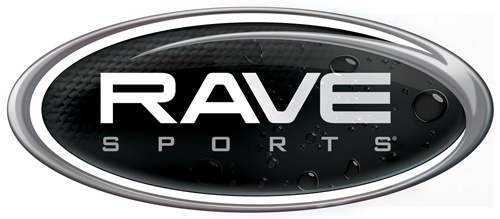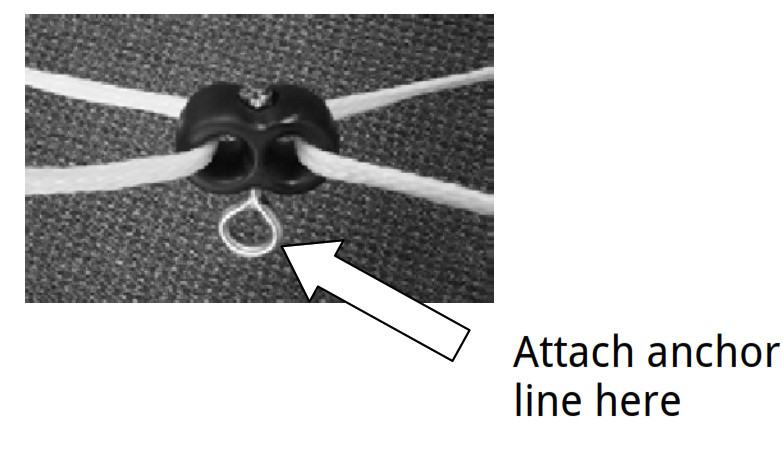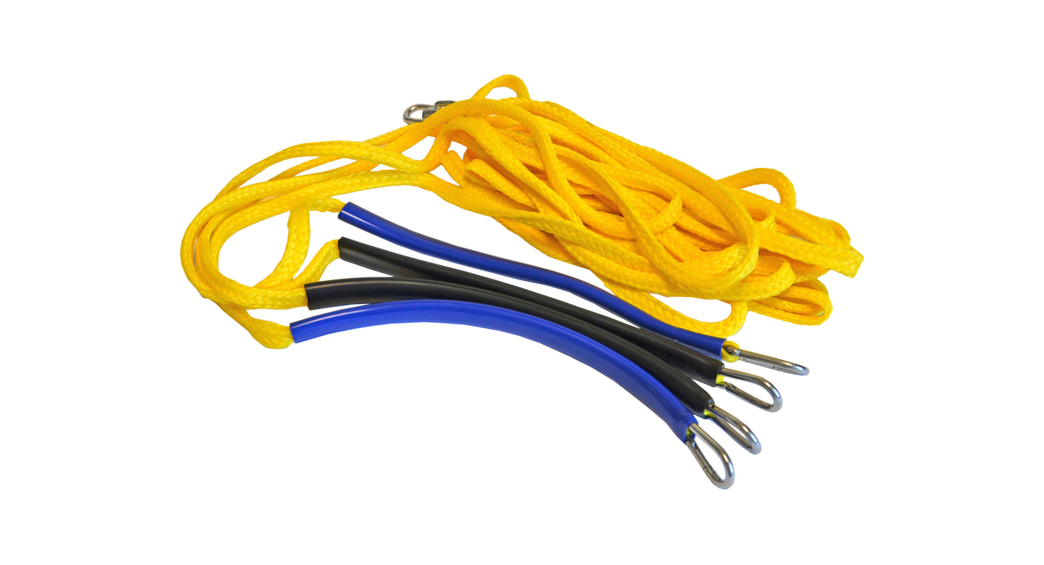Aqua Jump® Eclipse™ Bongo 20(Models AJ150/AJ200 and Bongo 20)Anchor Harness
Instruction Manual
Copyright ©All rights reserved. No part of this publication may be reproduced or transmitted in any form or by any means, electronic or mechanical, including photocopy, recording, or any information storage and retrieval system, without permission in writing from the publisher.Requests should be mailed to RAVE Sports, 3325 Labore Road, Saint Paul, Minn 55110.
Preparation
Lay the Aqua Jump Eclipse or Bongo 20 on a flat surface. Make sure there are no sharp objects under the product that might puncture the tube. Ensure the tube is completely opened and the top is facing up. Locate the valve and inflate the tube to about 2/3rds full (The anchor harness will be the first item to be attached. Do not attach the surface and springs to the tube at this time).
While standing inside the partially inflated tube, spread the Anchor Harness out onto the ground. With the ropes completely spread out, ensure the ropes are untangled and not crossing each other.All RAVE anchor harnesses are made using an “offset” design with a swivel. This allows maximum holding force in high winds. The AJ150 Anchor Harness will have one long rope running through the hole in the nylon glide assembly and one shorter rope tied directly to the other side of the nylon glide.
The AJ200/Bongo20 Anchor Harness has one long rope and one shorter rope but both ropes pass freely through the left/right holes of the nylon glide assembly. The glide must be free to slide along both ropes in order to maintain equal tension on all ropes, regardless of wind direction. Ensure both ropes are not tangled or crossed and that the glide is free to slide along both.
Installation
With the Anchor Harness evenly spread out inside the tube, identify between the long anchor harness rope, and the short rope. Identify the size of the product you have to the diagrams on the next page. Connect the end of each rope to the corresponding panel of the Aqua Jump/Bongo. If you are unsure as to the size of the product you own, count the number of panels on your inflatable tube, and match the number of panels to the diagram.


While looking at the appropriate diagram, locate the panel on the diagram labeled “VALVE” and match the diagram to the inflation valve location on your tube. This will tell you where to attach the long rope and the short rope to the appropriate locations on the tube. The harness will be attached to the triangular-shaped quick-link on each anchor plate.
Ensure the triangular quick-link is completely open by rotating the nut counter-clockwise. Attach the loop end of the rope into the quick link and close completely by rotating clockwise until tight. Repeat for all rope ends.


IMPORTANT
With each anchor harness end attached to the tube, ensure the nylon glide is free to slide smoothly along the rope(s). Finish assembling & inflating your product, move it to the water and attach your anchor line. Attach anchor line to the stainless steel pivoting ring.

Recommendation
For simple installation year after year, it is recommended to mark each attachment position. Under each attachment point, use a permanent marker to mark the location on the inflatable tube where each rope is clipped by marking L for long rope and S for short rope. This will assist you in attaching the harness in the future, and the marks will be hidden when the trampoline is fully assembled.
Inspect the nylon glide periodically to ensure it is sliding freely along the ropes. Remove weeds, foliage, or tangles that may prevent the glide from sliding properly. This movement of the glide along the ropes is necessary to maintain equal tension on the harness ropes and helps prevent flipping of your trampoline in high winds. Also, inspect the stainless steel swivel periodically to ensure it is free to rotate. This is critical to prevent twisting and damage to your anchor rope.
Inspect the entire Anchor Harness each year before attaching, and replace it if necessary.
The following conditions could result in potential hazards or damage to your product:
- Fraying or deterioration of the rope.
- Corrosion or debris preventing the stainless steel anchoring ring on the glide from spinning freely.
- Foliage or debris preventing the glide from sliding freely along the ropes.
Inspect and correct, or replace as necessary, to ensure proper function and performance of your anchoring system.Contact RAVE Customer Service with any questions.



www.ravesports.comRAVE Sports3325 Labore RoadSaint Paul, MN 55110800.659.0790December 2013
References
[xyz-ips snippet=”download-snippet”]

